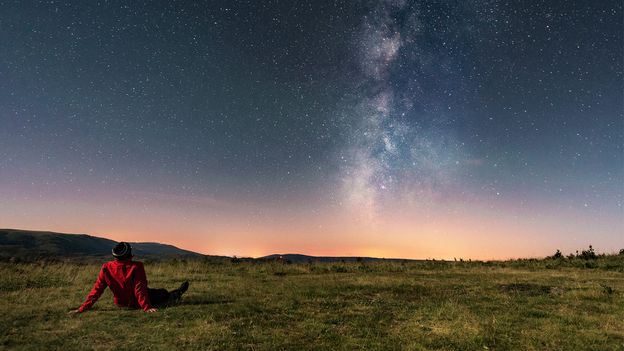Supporting nature-based tourism in Viet Nam for wide benefit

During the pandemic, a new silence descended over Ha Long Bay, Viet Nam’s top tourist destination, as the hundreds of cruise ships, row boats, and kayaks that usually traverse its emerald waters day and night sat empty onshore.
That is far from the case now. Tourism staged a sharp rebound in 2023 as nearly 13 million international visitors – more than triple the 2022 tally – poured into the Southeast Asian country. While this was well below the record 18 million who came in 2019, it beat government targets and was a bright spot in an economy facing weakening global demand for its exports.
Domestic travel also exceeded targets. Locals took 108 million trips within the country’s borders, 5.8 percent above the government’s plan.
Photo credit: Phong Nha Ke Bang National Park Management Board
Recognizing the sector’s growing importance to the economy, the government in 2023 launched an ambitious tourism development plan designed to boost foreign visitor numbers to 35 million by 2030, while also spurring domestic travel.
But without steps to protect the environment, tourism growth on this scale risks destroying the very natural spaces that are a prime attraction for visitors.
A new Global Environment Facility-funded project, implemented by the Nature and Biodiversity Conservation Agency (NBCA) under the Ministry of Natural Resources and Environment and supported by the UN Development Programme (UNDP), has been developed to support sustainable, nature-based tourism to conserve Viet Nam’s natural heritage and provide jobs for local people.
Tourists in Viet Nam’s hot spots generate thousands of tons of pollution and waste every year, raising concerns about irreversible damages to fragile ecosystems. Fodor’s, a popular publisher of travel guides, took the step of placing Ha Long Bay on its 2024 ‘No List’ of destinations that are falling prey to over-tourism, warning that tourists, served by a thriving cruising industry and growing fishing communities, are loving the destination to death.
Efforts to build a sustainable, nature-based tourism sector are helping to reverse this trend: easing pressure on Viet Nam’s delicate ecosystems and, by offering greener options and encouraging responsible consumption and environmental awareness among tourists, benefiting local populations and the country at large.
The GEF-funded project Promote Wildlife Conservation and Responsible Nature-based Tourism for Sustainable Development in Viet Nam includes a range of measures that will facilitate that shift to greener tourism, creating a sector that will safeguard nature while building economic resilience.
With more than 50,000 species and more being discovered all the time, Viet Nam is the world’s 16th most biodiverse nation. According to 2021 estimates from the WWF, the country is home to some 20,000 different plants and 10,500 terrestrial animal species. The waters off its curving 3,260-kilometer coast, meanwhile, teem with 11,000 marine species.
The tourism sector relies significantly on these outstanding natural assets and the draw of the 176 protected areas spread across the country. In surveys, travelers often cite natural beauty as one of the main reasons for Viet Nam’s appeal.
Among the country’s best-known protected areas are the project’s two initial target areas: Nui Chua National Park and Phong Nha-e Bang National Park.
Mountainous Nui Chua National Park is a UNESCO biosphere reserve in Viet Nam’s south-central coastal region known for the sea turtles that nest on its beaches and for its extensive coral reefs. The turtles are not the only reason it is critical to safeguard Nui Chua. According to UNESCO, 25 of the 83 mammals that live in the park are on the International Union for Conservation of Nature’s Red List of threatened species.
Photo credit: Nui Chua National Park Management Board
UNESCO World Heritage site Phong Nha-e Bang National Park is a region of dense, species-rich and biodiverse tropical forests that boasts a 104-kilometrer network of underground rivers and ancient and scientifically important limestone caves. Among them is the world’s biggest, Son Doong Cave: a cavern so enormous it has its own weather systems and takes tourists days to explore. There are two-year waiting lists for the limited number of available expeditions through the cave of the mountain river. Its growing popularity has transformed the livelihoods of those who live nearby.
To help Viet Nam protect its wild spaces, the GEF-funded project is helping the government to build policies and guidelines ecotourism and ensure that conservation plays a central role in national planning and regulation.
The project is also helping to improve the management of areas of high biodiversity through effective monitoring and reporting and engagement with local communities who play an important role as stewards of nature. Such measures are important to the well-being of local communities living near national parks and other protected areas, many of whom depend heavily on natural resources for their incomes, livelihoods, and ethnic traditions.
Efforts to raise awareness and support more sustainable practices by the tourism industry and visitors to Viet Nam are also part of the project, with targeted communications planned focused on discouraging the purchase of ivory and other illegal wildlife products.
The project is set to lay the groundwork for a stronger, more sustainable tourism industry that not only grows the economic benefits of tourism but magnifies them: by creating and promoting activities that generate good jobs while protecting the beautiful natural places that attracts so many to Viet Nam in the first place.
link




:max_bytes(150000):strip_icc()/sur-mer-cote-dazur-french-riviera-BOATSYACHTS0322-de3f01cb4a39401faf76dc5e31cea587.jpg)
